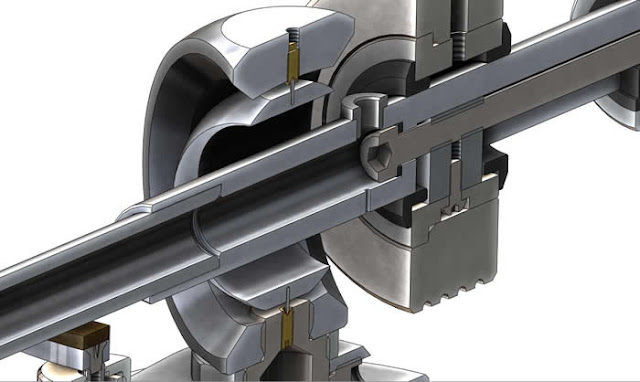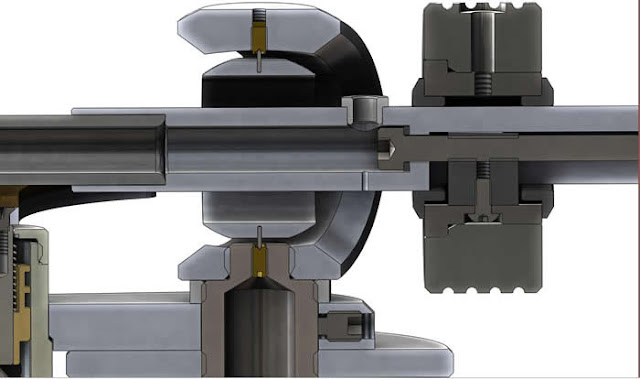The Traveler has the first gimbal bearing design that VPI produced; it is the predecessor of the Fatboy gimbal. The rest of the arm seems to be a replica of the Classic 10" tonearm.
The Traveler's vertical gimbal bearing (think up and down arm movement) appears to violate an ideal geometry because the twin bearings are not offset to match headshell/cartridge offset. At least it appears this way from the photo. The outer gimbal appears to be offset, but the inner ring (that holds the vertical bearings) doesn't appear to be.
If this is the case, then it's a common design error found in many tonearms, even very expensive arms, although I don't understand why. I can't imagine that it is more expensive to design correctly aligned pivots than otherwise. One might argue that given the numerous and problematic variables involved with record playing, the overall effect of the misalignment is small. And that is likely true. But why make things worse in the first place when it's possible to avoid the problem, altogether?
[Note: this is not related to the geometry of lateral tracking error, which is a different issue entirely.]
Pisha, Kessler, and Pramanik discussed this in a series of
Audio magazine articles from the '80s (excerpt follows).
_________
Correct lateral alignment of vertical bearings is important for maintenance of designed geometry and cartridge azimuth. If records were perfectly flat, the angle of the bearings affecting the vertical axis would not be critical. However, that is not the case, and with vertical tracking angle (VTA) adjustments on some tonearms,
the headshell will not remain parallel to the record surface as the arm moves up and down in the vertical axis since the plane of the cartridge body changes with respect to the record surface.
If the angle of the vertical bearings is perpendicular to the line through the offset angle, there will be only one angular change, that of the VTA. If, however, the bearings are not perpendicular to that line, the plane generated becomes a compound angle problem - the cartridge plane twists in two angles (azimuth changes).
As the arm traverses warps or is raised and lowered in the pivots for VTA, the parallel plane is lost in proportion to the difference in angle from perpendicularity from the plane of the cartridge.
Visualizing this isn't easy, but if the arm could be rotated up in the vertical plane until it was straight up, the arm whose bearings were in alignment with the offset angle would have the front of the cartridge still parallel to the record surface, whereas the arm not so designed would have the right front edge of the cartridge higher than the left front edge.
Generally, if the vertical bearings are in alignment with the offset angle, the problems with warp and VTA are made less severe because a simple angle is generated, rather than a compound angle that is typical with many arms currently available.
_________
Pramanik illustrates: the first picture shows a tonearm (like the Traveler) where the vertical (up and down) bearing is not offset to match headshell offset. As the arm moves up (due to record warp) the stylus rotates in the groove, causing (according to Pramanik) unwanted FM distortion. The second shows a correctly designed pivot. Here, as the arm rises with a record warp, the stylus remains perpendicular to the record groove.:
Interestingly, most Technics arms have correct vertical pivot angle, however the EPA-250/500 series gets it wrong. Compare the EPA-100 (correct) with the 250/500.
EPA-100
EPA-250/500




